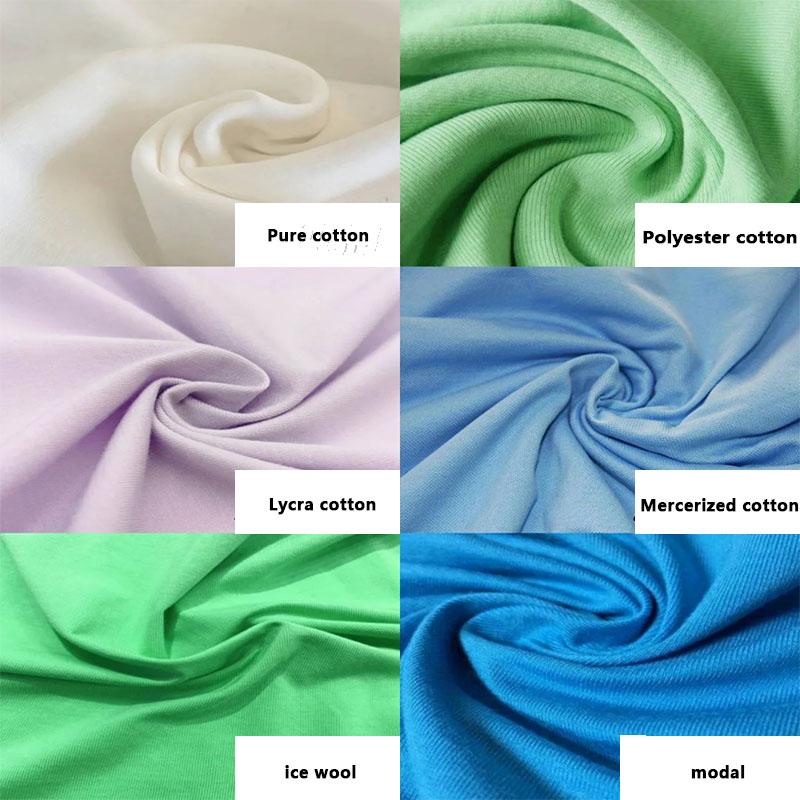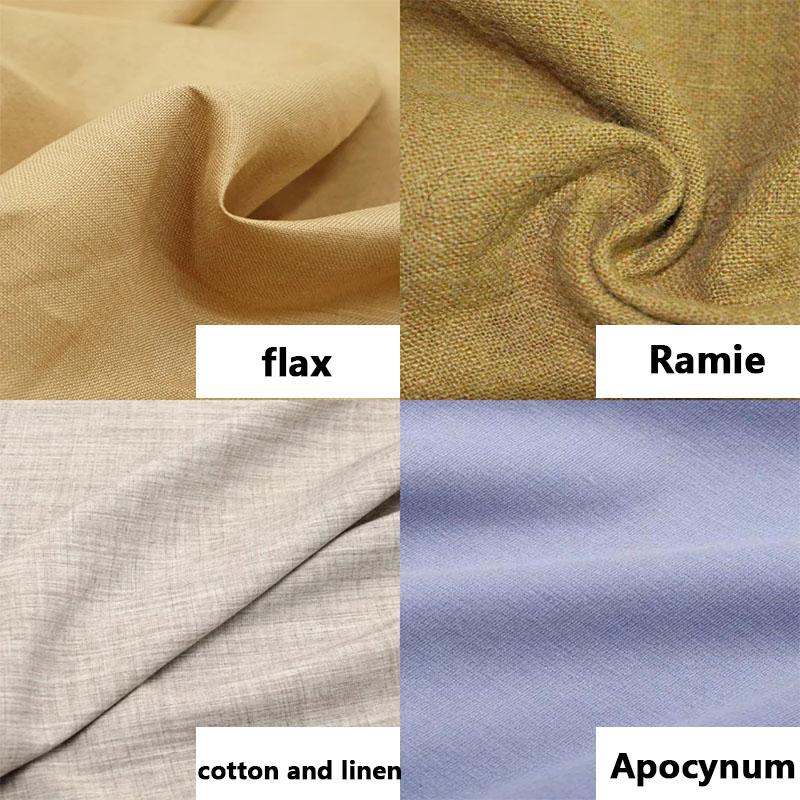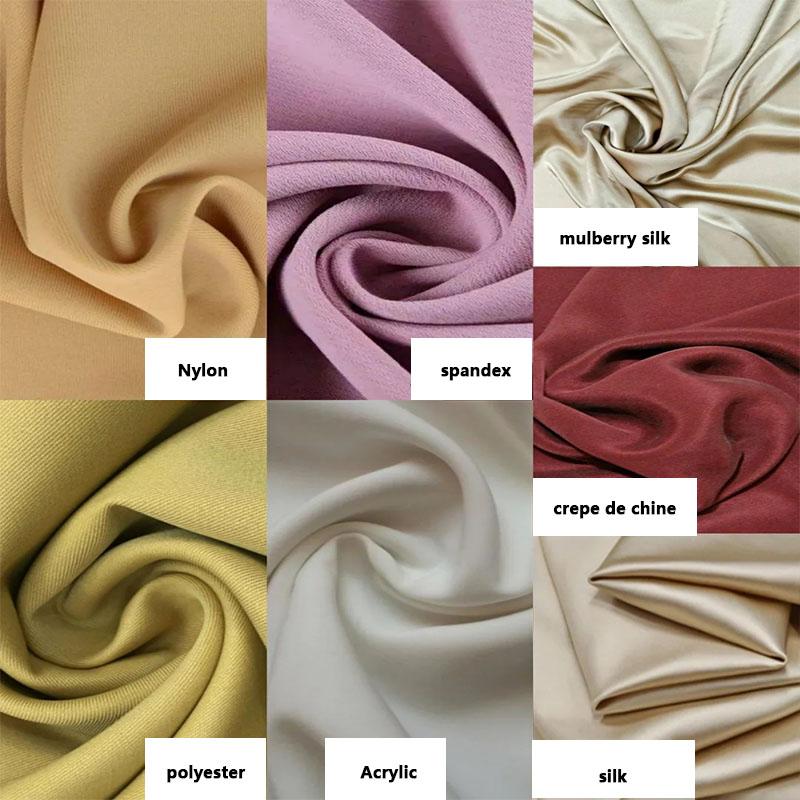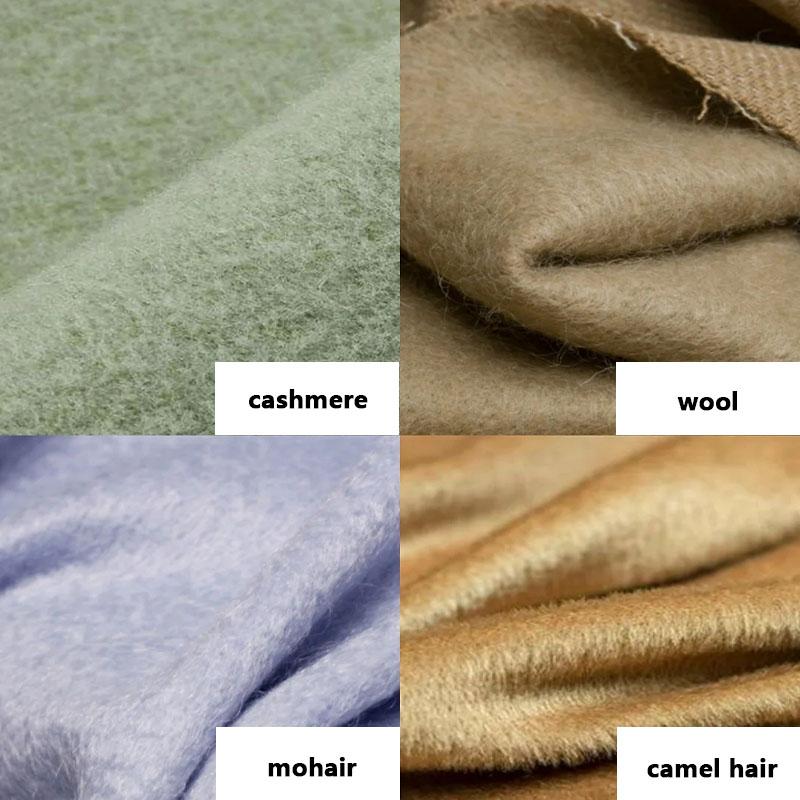Fabric Properties and Characteristics for Garment Manufacturing
Cotton fabric
Pure cotton: skin-friendly and comfortable, sweat-absorbing and breathable, soft and not stuffy
Polyester-cotton: polyester and cotton blended, softer than pure cotton, not easy to wrinkle, but not as good as pure cotton
Lycra Cotton: Lycra (a man-made stretch fiber) blended with cotton, it is comfortable to wear, wrinkle-resistant and not easily deformed
Mercerized cotton: high-grade cotton is used as raw material, with high gloss, light and cool, not easy to fade, moisture-absorbing, breathable, and non-deformable
Ice cotton: The cotton cloth is coated, thin and impervious, non-shrinking, breathable and cool, and soft to the touch
Modal: Skin-friendly and comfortable, dry and breathable, suitable for close-fitting clothing
Hemp fabric
Linen: Also called flax, it has good hygroscopicity, anti-static, toning and breathable, suitable for close-fitting in summer
Ramie: Large fiber gap, breathable and cool, sweat-absorbing and quick-drying
Cotton and linen: suitable for close-fitting clothing, warm in winter and cool in summer, antistatic, non-curling, comfortable and antipruritic, breathable
Apocynum: Wear-resistant and corrosion-resistant, good hygroscopicity
Silk fabric
Mulberry silk: soft and smooth, with good heat resistance and ductility, warm in winter and cool in summer, the surface of the fabric is very shiny
Silk: Comfortable and soft to the touch, smooth and skin-friendly, high-end wearing, cool and good moisture absorption and release
Crepe de chine: soft, bright color, elastic, comfortable and breathable
Chemical fiber fabrics
Nylon: moisture absorption and wear resistance, good elasticity, easy to deform and wrinkle, no pilling
Spandex: very elastic, poor in strength and moisture absorption, easy to break threads, this material was used in the previous black pants
Polyester: The big brother in the chemical fiber industry, the “really good” that was once popular is it, and now it is almost eliminated
Acrylic: commonly known as artificial wool, it is more elastic and warmer than wool It’s sticky, not suitable for close-fitting
Plush fabric
Cashmere: textured, warm, comfortable and breathable, the disadvantage is that it loves static electricity and has a short service life
Wool: fine and soft, suitable for close-fitting clothing, with high drape texture, the disadvantage is that it will cause a felting reaction after wearing it for a long time
Ps: The difference between cashmere and wool
“Cashmere” is a layer of wool that [goat] grows on the skin surface to resist the cold wind in winter, and gradually falls off in spring, and is collected with a comb
“Wool” is the hair on the body of [sheep], shaved directly
The warmth of cashmere is 1.5 to 2 times that of wool
The output of wool is far greater than that of cashmere
Therefore, the price of cashmere is also much higher than that of wool.
Mohair: Angora goat hair, the output is very low, it is a luxury material, the hundreds of pieces on the market are definitely not real/pure mohair, the main goods are basically imitations of acrylic fibers
Camel hair: also known as camel hair, which refers to the hair on the Bactrian camel. It has good heat retention and lower cost than down.
Post time: Dec-06-2022






